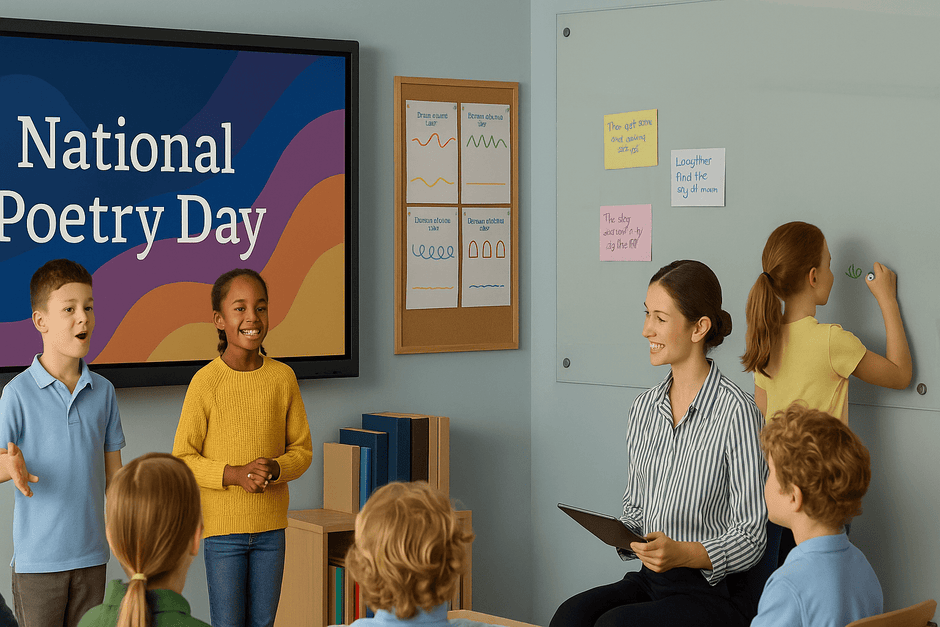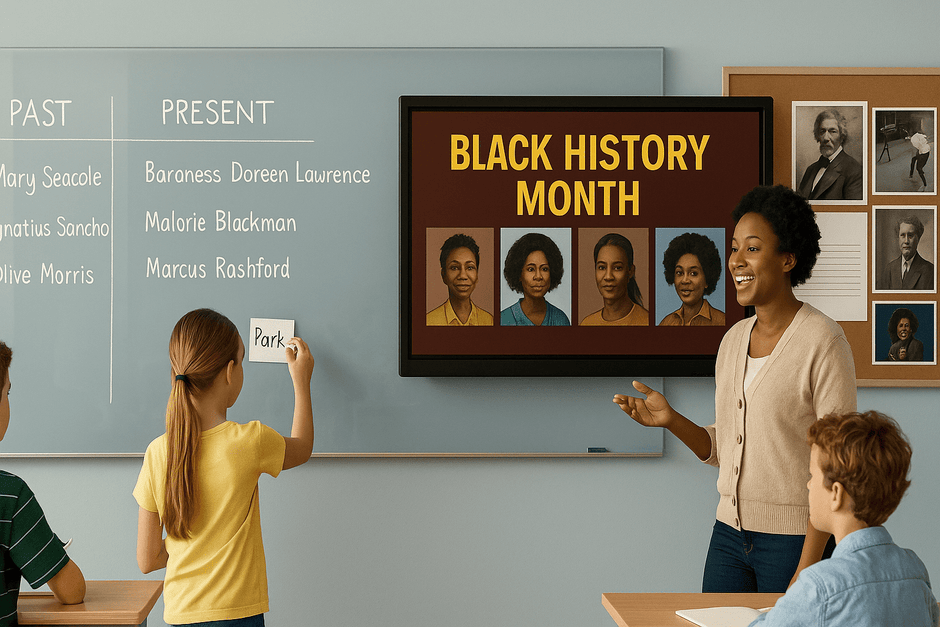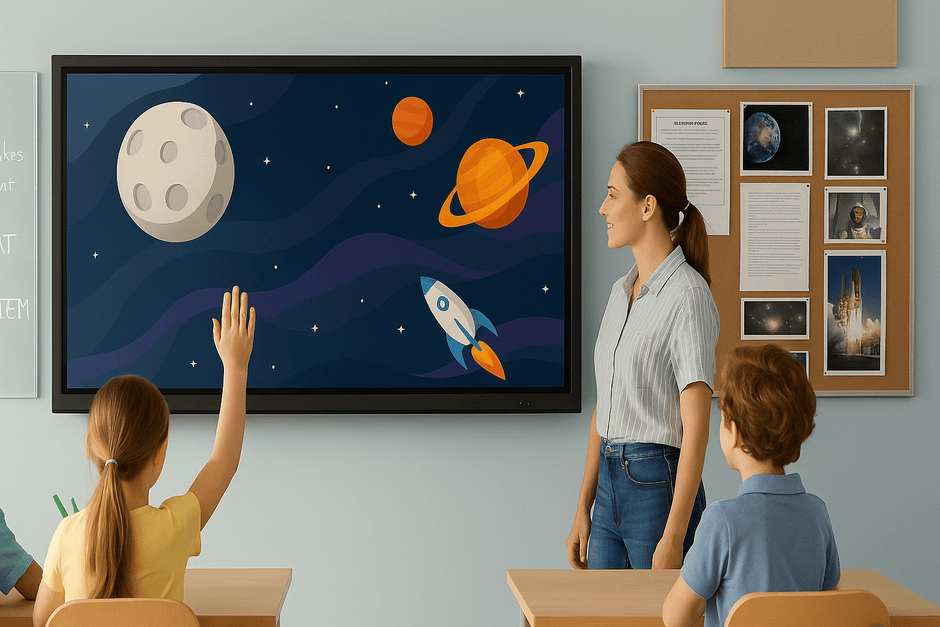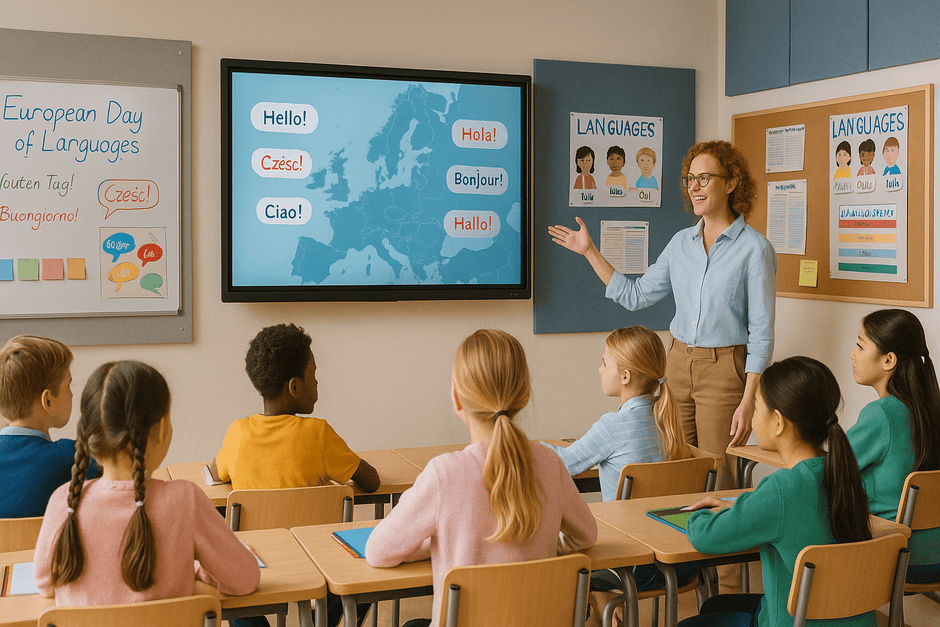National Poetry Day 2025: Playful, purposeful and ready for the classroom
Date: Thursday 2 October 2025 • Theme: Play • Read time: ~12 minutes
Poetry belongs to everyone. This guide turns National Poetry Day into a joyful, inclusive celebration with ideas you can lift straight into lessons, displays and assemblies. It also shows how to set up spaces so performance and pupil voice shine.
Why poetry matters
Poetry is a low-threshold, high-ceiling art form. Short, playful, spoken or sung, it invites every learner in and rewards curiosity. In the classroom it:
- Builds oracy and confidence through performance and peer sharing.
- Supports wellbeing by offering safe outlets for feeling and identity.
- Helps SEN and EAL learners via rhythm, repetition, gesture and visual prompts.
- Connects subjects − music, drama, art, science and even maths can all meet in a poem.
This year’s theme − Play − is a gift: it legitimises experimentation with sound, shape and surprise, and reduces anxiety about getting poetry ‘right’.
Past, present and future of poetry
Use a simple three-part frame to structure your displays and lessons across the week.
Past − classics with a playful twist
- Short extracts from Blake, Rossetti or Lear to explore rhythm, rhyme and nonsense.
- Rewrite a classic: swap the setting, modernise the voice, or turn a stanza into a rap.
Present − voices pupils recognise
- Contemporary performance pieces and children’s favourites for quick read-alouds.
- Open mic in tutor time: pupils perform a favourite poem or a new verse of their own.
Future − our poets in the making
- Create a ‘Future Poets Wall’ where pupils post a selfie sketch, a line they love, and a pledge as a writer or performer.
- Nominate a monthly poet from each class and keep the wall alive all term.
Practical ideas for the day
- Poetry playground stations − rhyme lab, onomatopoeia corner, limerick workshop, blackout poetry table. Rotate every 10 minutes.
- Five-minute challenges − start lessons with playful prompts: three animal words, one invented verb, one surprising rhyme.
- Collaborative chain poems − each group writes a couplet then passes it on. Read the final version aloud.
- Page to stage − pupils storyboard a poem for performance with gesture, pace and pause.
- Illustrated poems − combine short texts with drawings for corridor displays.
- Secret sound poems − write to a sound clip; peers guess the sound after the reading.
Community and family: widening the circle
- Poetry café evening − warm lighting, hot chocolate, and 2-minute slots for pupils, staff and families.
- Pocket poems home − send a mini print of each pupil’s poem to share with parents or carers.
- Corridor ‘listening posts’ − QR codes linking to audio performances recorded by pupils.
Poetry and digital media
- Poetry reels − 30–60 second performances filmed in portrait for display on interactive screens.
- School poetry podcast − record short episodes with intros, readings and reflections.
- Visual poems − animate a haiku or shape poem and share on a projection screen in assembly.
Inclusion and wellbeing
- Offer multiple entry points − dictation to scribe, word banks, picture prompts, sentence stems.
- Use large, high-contrast displays and position work at eye level for readability.
- Create calm performance spaces where pupils can rehearse quietly before sharing.
- Celebrate process as well as product − drafts, crossings-out and revisions belong on the wall too.
From one day to a year of poetry
- Launch a weekly open mic at lunchtime.
- Create a Poet of the Month display with pupil picks and mini reviews.
- Publish a termly poetry anthology − printed or digital − and celebrate new contributors.
Space and environment: a short case study
In a Year 6 open mic, moving from a noisy hall to a classroom with acoustic panels transformed the experience. Pupils could hear breaths, pauses and rhyme, which improved confidence and performance. A bank of glassboards next to the reading area became a living word wall where classes posted line starters, rhyme pairs and new vocabulary. An interactive screen played short clips of poets performing, and a projection screen supported the end-of-day showcase for families. Displays stayed up through October, reinforcing that poetry is part of everyday learning, not a one-off event.
Relevant products from Presentation Spaces
Explore solutions that make poetry visible, inclusive and collaborative:
- Glassboards − perfect for word walls, shared drafting and pupil ‘Future Poets’ pledges.
- Display Boards − publish illustrated poems, performance posters and pocket poems.
- Acoustic Panels − clearer speech for readings and rehearsals, aligning with BB93 good practice.
- Interactive Screens − show reels, host live prompts and record performances.
- Projection Screens − whole-hall showcases and poetry café backdrops.
Sample day plan
| Time | Activity |
|---|---|
| 08:45 | Assembly − theme ‘Play’ with two quick live performances |
| 09:30 | Poetry playground rotations (4 stations × 10 minutes) |
| 11:00 | Five-minute challenges to open each lesson |
| 13:00 | Collaborative chain poems on glassboards |
| 14:15 | Open mic rehearsal − small groups, calm space |
| 15:00 | Showcase: poetry reels on interactive/projection screens |
| After school | Poetry café for families; pocket poems sent home |
Next steps
Pick two high-impact activities, prepare a visible word wall, and plan a short showcase so every pupil can share their voice.
Need help specifying? Contact Presentation Spaces for advice on glassboards, acoustic upgrades and digital display solutions for poetry performance and publishing.









